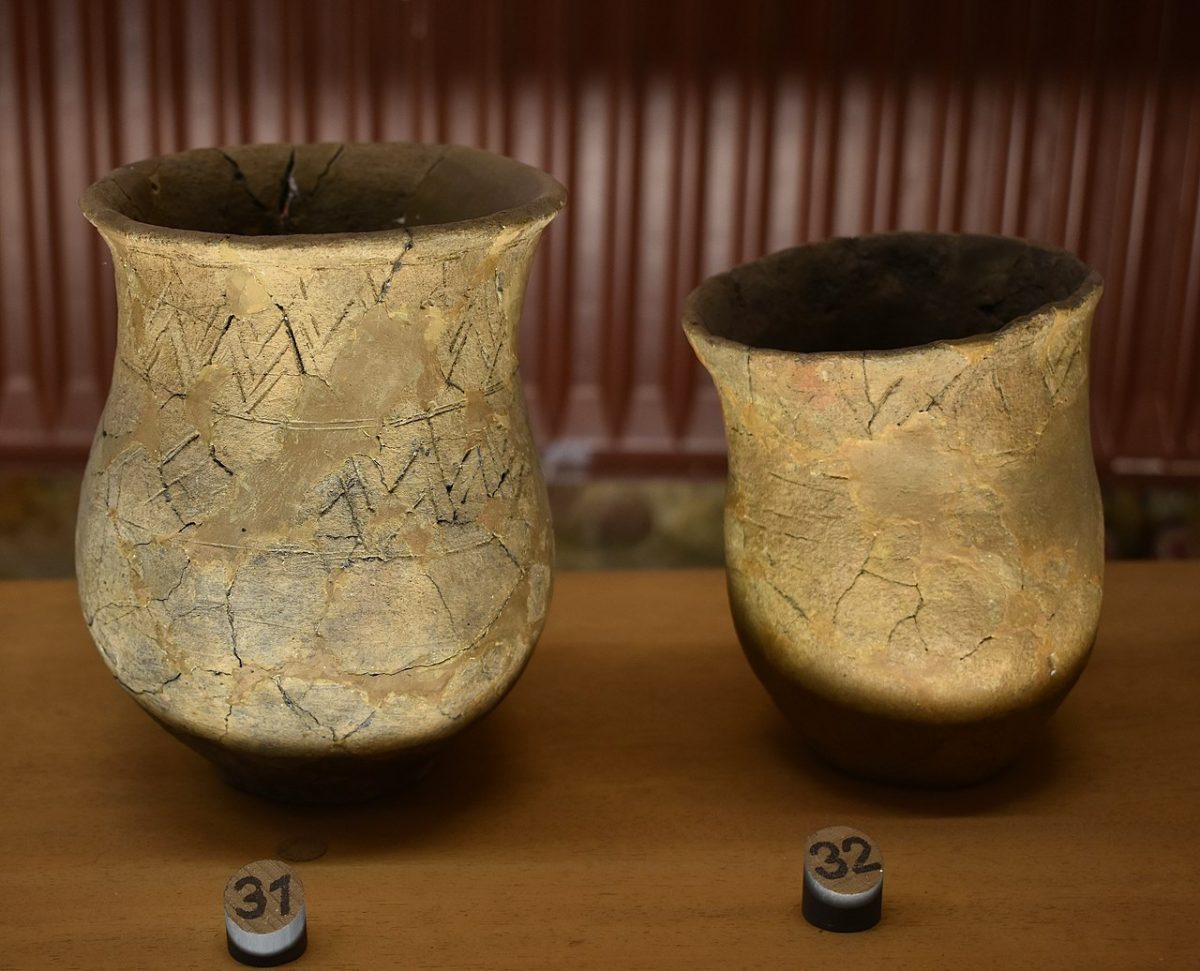

However, work by Humphrey Case in the 1990s suggests that all three styles were used contemporaneously, with different shapes used for different purposes. Bell Beaker burials are known from both the megalithic tombs as well as from a few individual burials where the body was placed in the fetal position. The traditional archeological interpretation is that the original, typical bell-beaker shape was replaced by the short-necked form, which in turn was replaced by long-necked bell-beakers. Some have a looped handle on one side or a white coloured material pressed into the decoration, contrasting with the usual orange or brown ceramic. Where comb designs are used, perhaps along with cord impressions they are called all-over ornamented (AOO) beakers.

When the decoration covers the whole vessel they are known as all-over corded (AOC) beakers. Potters’ Mobility Contributed to the Emergence of the Bell Beaker Phenomenon in Third Millennium BCE Alpine Switzerland: A Diachronic Technology Study of Domestic and Funerary Traditions. Beakers were only adopted in some regions and. However, questions remain as to why Bell. “Typical” bell beakers appear to be the earliest type and are often covered with decoration made from impressing twisted cord into the unfired clay. The Bell Beaker pottery is known to have had a very wide distribution. Long-neck bell-beaker, at Steinsburgmuseum. Bell Beaker Rijksmuseum of Oudheden 122.jpg 1,600 × 1,256 150 KB Bell Beaker Rijksmuseum of Oudheden 131.jpg 750 × 604 73 KB Bell Beaker Rijksmuseum of Oudheden 134.


 0 kommentar(er)
0 kommentar(er)
